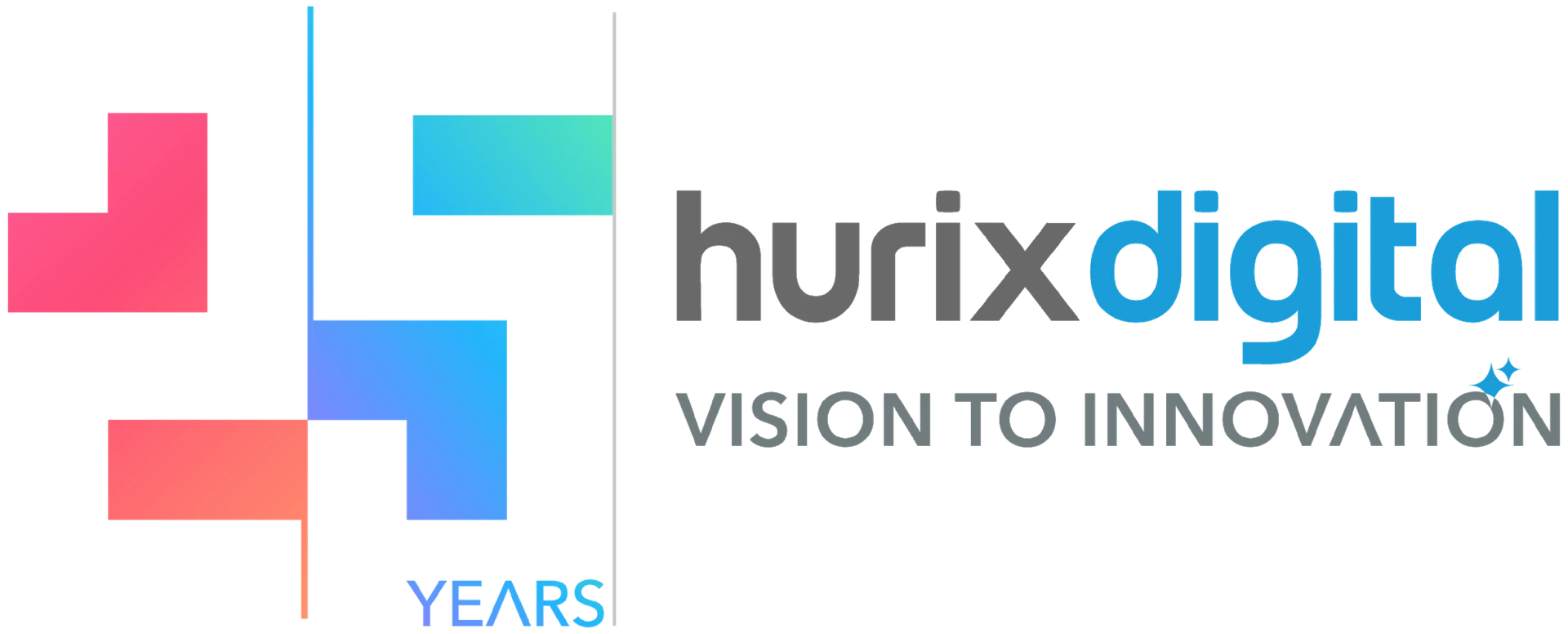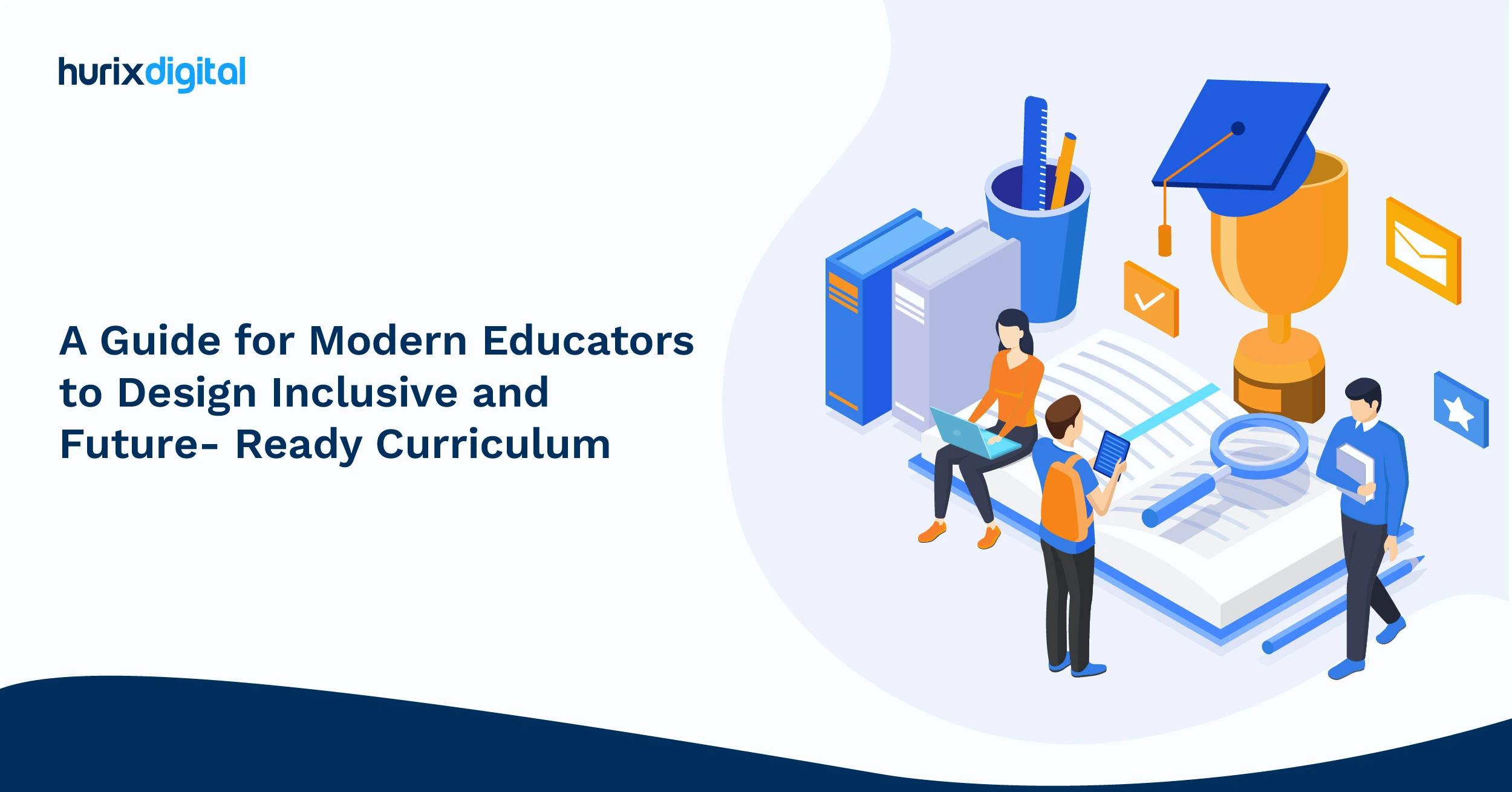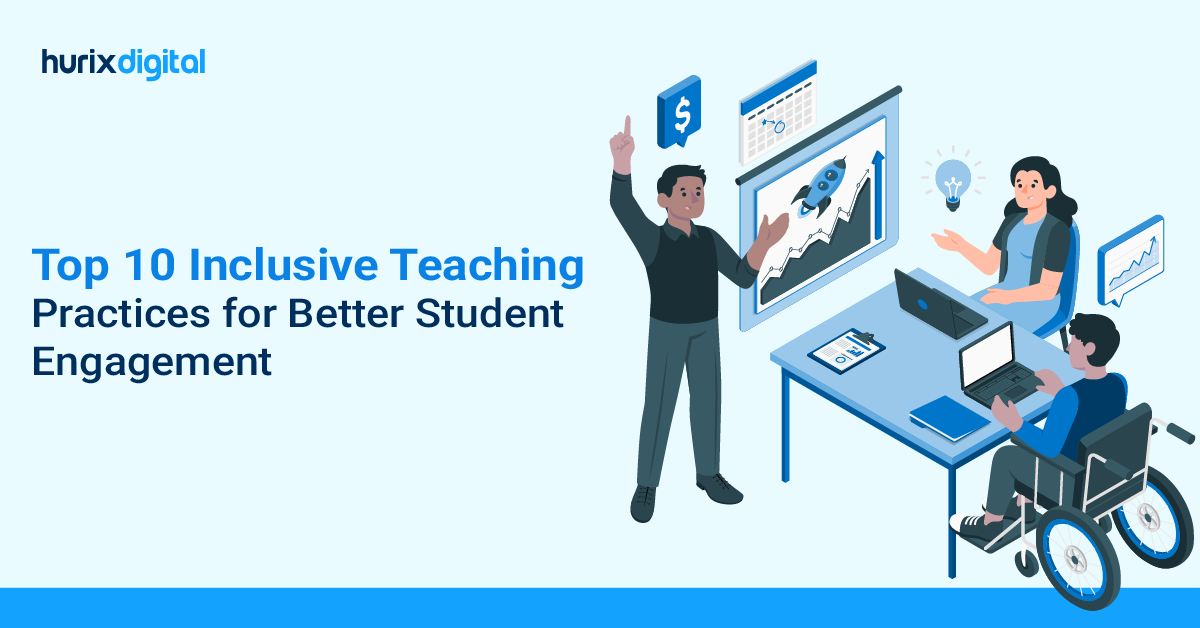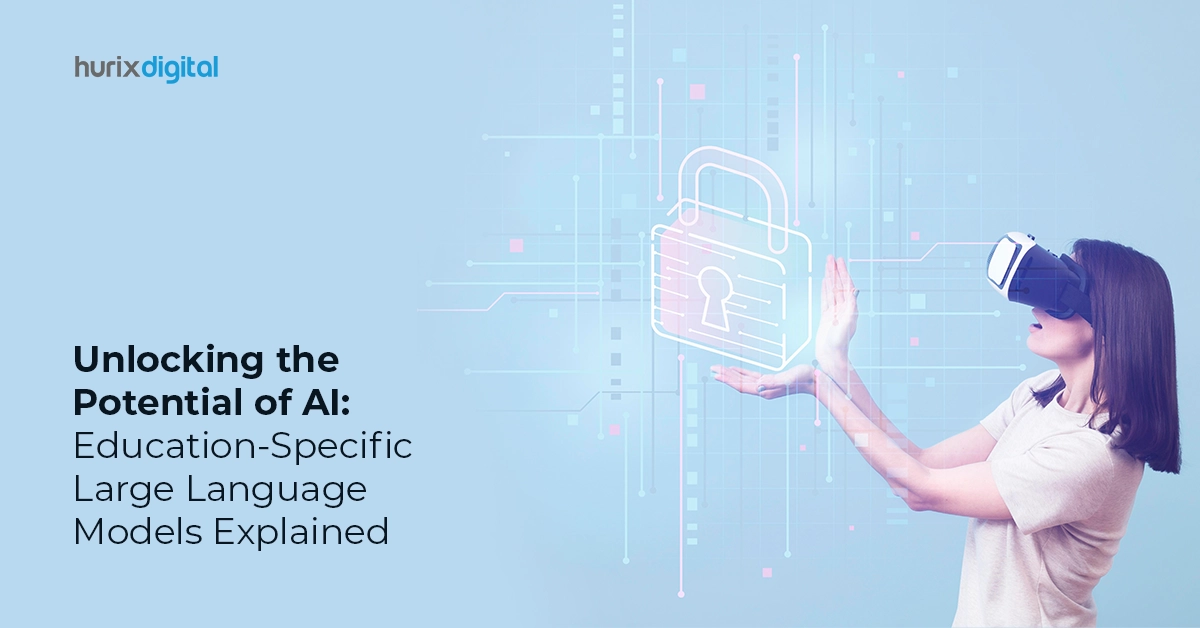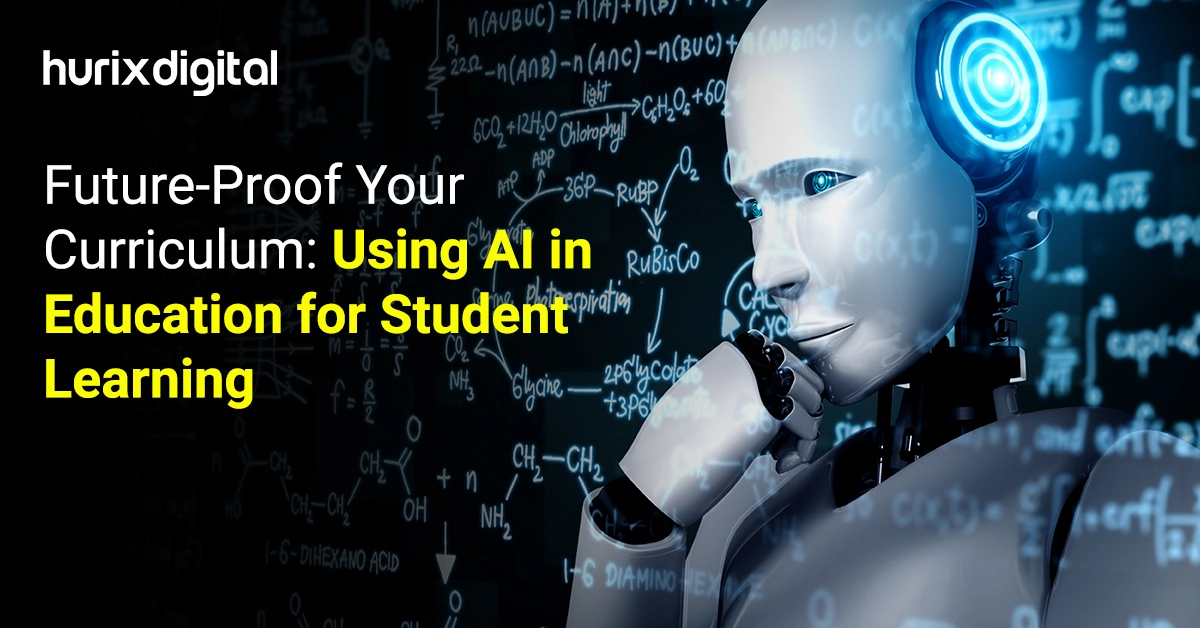
Future-Proof Your Curriculum: Using AI in Education for Student Learning
Summarize with:
The higher education sector is gradually transforming from its traditional practices and moving rapidly towards EdTech solutions. AI-powered education has made learning easy for students and empowered educators to offer personalized and optimized learning experiences.
The AI in education market was valued at $2.5 billion in 2022 and is expected to reach $88.2 billion by 2032. It is growing at a CAGR of 43.3%. It signifies that AI has immense potential. Incorporating it into educational strategies equips students for a future where such technologies are prevalent.
Read on to explore how AI is transforming curriculum development and preparing students for tomorrow.
Table of Contents:
- How EdTech Solutions Enhance Personalized Learning with AI
- How AI for Curriculum Design Future-Proofs Your Curriculum for Continuous Student Learning
- How to Future-Proof Your Higher Education Curriculum with AI
- Offer Professional Development for Educators
- Promote the Ethical Use of AI
- Create Immersive Content
- Promote Scholarly Research and Innovation
- Enhanced Learning Support
- Innovate Curriculum Design and Development
- Assessment and Evaluation
- Build Industry and Academic Partnerships
- Conduct Continuous Curriculum Review
- Wrapping Up
How EdTech Solutions Enhance Personalized Learning with AI
It is significant for higher education institutions to redefine their educational goals, focusing on what skills and thinking abilities graduates should possess. They must incorporate AI-powered education and build a collaborative environment.
Here are some ways in which AI in education works:
1. AI for Educators
AI for educators helps streamline their administrative tasks, allowing them to focus more on teaching and less on other duties. AI can also help them communicate with parents, plan lessons, and follow a curriculum that is updated according to industry trends. AI tools and platforms can empower educators to deliver the desired content and guide students through personalized learning experiences.
2. Adaptive Assessments
AI-driven assessments can adjust to a student’s comprehension level. This means that they can make the most of immediate feedback and targeted exercises. It also makes evaluations more effective and less stressful.
3. Personalized Tutoring Systems
AI systems offer personalized tutoring, answering questions, providing explanations, and suggesting additional resources. This shows how AI makes learning more interactive.
4. Data-Driven Insights
AI and ML algorithms can analyze large datasets to reveal insights into student performance. This helps educators identify areas where students struggle and adjust their teaching methods.
Also Read: 8 Reasons to Include Interactive Video Learning in Higher Ed Courses
How AI for Curriculum Design Future-Proofs Your Curriculum for Continuous Student Learning
The integration of AI and generative AI into higher education is a revolution in teaching and learning methodologies.
Here are several ways in which AI for curriculum design can transform education:
1. Introducing Adaptive Learning
AI-powered adaptive learning marks the personalization of an educational experience according to each student’s pace, learning style, and comprehension level. Adaptive learning platforms have greatly improved student engagement and success across various subjects. Such platforms enable improvement in slower learners and better engagement in faster learners.
2. Enhancing Creativity and Efficiency
Generative AI is transforming the creation of educational content. This technology empowers content creators and publishers to develop more engaging learning materials and provide immediate assistance to students. Moreover, institutions are offering AI-powered resources like chatbots to support students in remote learning to provide students with preliminary answers to questions and 24X7 support.
3. Empowering the Educational Community
The influence of GenAI extends to the broader educational ecosystem. The focus is on including g specialized courses and hands-on projects which prepare students for an AI-augmented future. Integrating AI into the educational ecosystem enhances students’ digital technology proficiency and prepares them to influence future employment opportunities.
4. Promoting Inclusivity and Accessibility
AI solutions are being utilized to formulate curriculum content to according to modern student needs and translate materials into various languages. This removes barriers for international and differently-abled students. AI for curriculum design focuses on personalized and accessible learning experiences, making it inclusive for a diverse range of students.
5. Improving Pedagogical Innovation
AI-driven customization, along with GenAI, can support adaptive learning, forecast outcomes, identify student challenges early, and offer proactive solutions. AI can provide an unlimited source of content customized according to core knowledge. It can also analyze data points like student engagement and emotional responses. Such measures help design personalized educational experiences to meet each learner’s needs.
6. Enhancing Operational Efficiency
AI can automate grading, enrollment, and scheduling, easing administrative burdens on staff. Predictive analytics can optimize resource allocation, campus management, and student services. This ensures decisions are data-driven and reduces task time in educational settings.
How to Future-Proof Your Higher Education Curriculum with AI
Here’s how you can make the most of personalized learning with AI and future-proof your curriculum development:
1. Offer Professional Development for Educators
Provide educators with training on effectively using AI tools and interpreting data insights to enhance teaching. Encourage participation in professional development programs and ensure the content focuses on the latest AI advancements and educational technologies.
About 64% of institutions focus on preparing students for the future workforce, while 63% are exploring innovative teaching methods. Besides technical skills, educators and students should get soft skills training on topics like empathy, creative thinking, and critical thinking.
2. Promote the Ethical Use of AI
Implement data protection measures to safeguard student information and comply with privacy regulations. Institutions must frame internal protocols to ensure that AI used ethically and sensitive information is protected.
3. Create Immersive Content
Create virtual reality scenarios for immersive learning experiences and curate information to enhance course objectives. Promote AI literacy to prepare graduates for an AI-driven world.
Graduates should also possess the skills to contribute to an AI-integrated society—curate multimedia-rich content, such as simulations, virtual labs, and gamified learning experiences. Integrate NLP for chatbots and virtual assistants to assist students with queries, assignments, and administrative tasks.
4. Promote Scholarly Research and Innovation
AI can accelerate research, promote innovation, and advance various disciplines. AI can help analyze qualitative responses and help directors and EdTech leaders in decision-making and cognitive processes. Higher education institutions can build academic-industry partnerships and offer students opportunities to engage in advanced AI research and practical applications.
5. Enhanced Learning Support
Educational institutions can implement AI-driven tutors for supplementary support. They can further use AI to detect students at risk of underperforming and offer early solutions with the appropriate support. You must also provide ample professional development opportunities and help students experiment with new technologies.
6. Innovate Curriculum Design and Development
Employ AI analytics to examine student performance data and identify trends. Use AI to align curriculum content with industry-required skills, and make sure learning programs remain relevant and meet job market demands.
7. Assessment and Evaluation
Use AI to automate the grading of quizzes, tests, and assignments and offer immediate feedback. This can help educators get more free time for student engagement and interactions. You can further implement AI to conduct continuous formative assessments, monitor student progress, and adapt instruction accordingly.
8. Build Industry and Academic Partnerships
Leaders of educational institutions can form partnerships with tech companies to stay updated on the latest AI innovations and integrate them into the curriculum. It is equally significant to facilitate internships and real-world projects where students can apply AI in practical settings. This can bridge the gap between theory and practice.
9. Conduct Continuous Curriculum Review
Establish a system for regular curriculum reviews and updates, and use feedback from students, faculty, and industry stakeholders. Use AI to predict future trends in education and employment, to ensure that the curriculum remains forward-looking and adaptable.
Also Read: Holistic Approaches to a Student-Centered Approach and Equity in Higher Education
Wrapping Up
The integration of AI in education requires collaborative efforts and a commitment to continuous innovation. The education industry can use EdTech solutions to deliver personalized and inclusive education and promote AI for curriculum design.
AI-powered education is a societal benefit that can greatly enhance educational outcomes, bridge learning gaps, and encourage an adaptive learning environment.
Ready to revolutionize your educational strategies? Partner with the experts at Hurix Digital to explore the full potential of AI in curriculum design and EdTech solutions. Together, we can future-proof your curriculum and elevate student learning to new heights. Let’s shape the future of education—get started today!
Summarize with:

Senior Vice President
A Business Development professional with >20 years of experience with strong capability to sell new solutions and develop new markets from scratch. New Market Entry Specialist with experience working in the largest emerging markets. Exceptional experience in conceptualizing, ideating and selling new learning technologies like VR AR, etc. across multiple industry verticals.
 A Space for Thoughtful
A Space for Thoughtful 